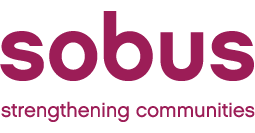While many of us enjoy the lead up to the festive season, and spending time with friends and family until the New Year, January can often bring a bit of a slump in our mood.
Taking care of our mental health is absolutely vital – especially those working and volunteering in voluntary and community services that our clients are so often highly dependent on. It’s is really important to take care of your own wellbeing, in order to better support those who are turning to you for help, advice and assistance.
The cost of living crisis is beginning to bite, the post Christmas credit card bills are landing on our doormat, and the continuing short days, damp and cold weather without the sparkle and glow of Christmas lights can make January a bit of a low season. However, for many, the January blues could be seasonal affective disorder (SAD) – a type of depression that comes and goes in a seasonal pattern.
SAD is sometimes known as “winter depression” because the symptoms are usually more apparent and more severe during the winter. Symptoms of SAD can include:
- a persistent low mood
- a loss of pleasure or interest in normal everyday activities
- irritability
- feelings of despair, guilt and worthlessness
- feeling lethargic (lacking in energy) and sleepy during the day
- sleeping for longer than normal and finding it hard to get up in the morning
- craving carbohydrates and gaining weight
- difficulty concentrating
- decreased sex drive
- For some people, these symptoms can be severe and have a significant impact on their day-to-day activities.


